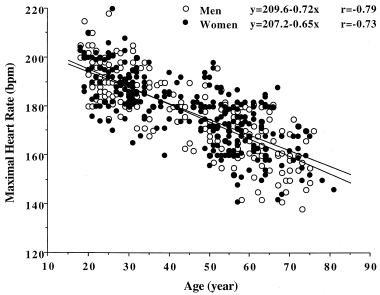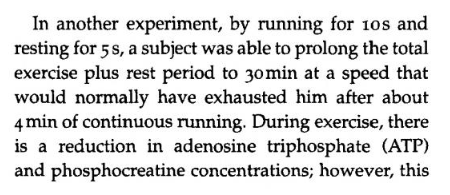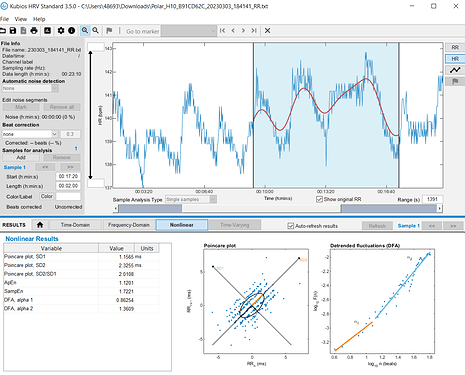Thank you! Roger (and his gear) looks great. For the moment, I will not invest in a new cycle: I have and old Trek (Multitrek, ~30 year old, 10 kg) which I may modify for the road, if necessary. So being on a saddle for more then 2 hours equals pain, hence I make my gravel sessions short and intense. Roger may have a good advice…
Hi Alex,
I’m in a trouble with my Erg MAF test. The problem comes from armband (Magene) reported HR and smart band (Huawei Band 4 pro). For the first 10 minutes (warm-up), I will get up to 30 BMP difference between them. I now try to tune the pace and discover ‘better’ HR (but it is not an average) for remaining 20 minutes flat run. On that ‘flat run’ discrepancy between devices can be up to 5-6 BMP.
I’m a step from ordering Polar H10, as such a ‘lousy’ technology makes me angry and not a better man. Look like optical devices for that purpose were a waste of money.
Yes, Polar H10 is the best choice. All my MAF tests were done with Polar chest straps. I would guess all optical is not good enough. I have Apple Watch, Garmin 955, whoop strap and none are very accurate.
Yeah Roger has more money than most of us. And his full passion is cycling. 10kg Trek sounds like a great bike. No good reason for better.
Well, ordered H10 with Polar shop. Good price. So Polar strap again after 25 years of absence. 

Polar H10, after position tweaking, allows for correct level of training. That tuning was not obvious.
In Hurst’s ‘The Heart’, chapter 13, authors elucidate the famous 220 - age formulae origin:
An anecdote of how the commonly used, easy-to-remember 220 – age formula was created to estimate MPHR is both interesting and highlights its limitations. On a plane to a medical convention in 1970, Haskell and Fox realized that in about 10 studies of young and middle-aged men undergoing exercise testing, maximum heart rate achieved could be roughly estimated by the formula 220 – age. The paper in which they define the formula describes its use not to estimate MPHR on an exercise test but to develop a patient’s exercise prescription. Formulas with a greater evidence base are recommended to estimate MPHR. Tanaka and colleagues, for example, found that 220 – age results in an underestimation of maximum heart rate, particularly in older patients. In a meta-analysis of 351 studies involving 18,712 patients, the empirically derived formula of 208 – 0.7 × age best predicted the maximum heart rate. The formula was predictive in men and women and independent of habitual activity level. They then tested the formula prospectively in 514 subjects, finding excellent prediction of maximum heart rate.
Link to that chapter is hear: CHAPTER 13: ELECTROCARDIOGRAPHIC EXERCISE TESTING
It seems quite strange to stick to ‘220 - age’ now. In US CDC site (CDC is one of the major operating components of the Department of Health and Human Services) they repeat that ‘truth’ to everybody willing to hear it in English and Spanish.
Then, when you discover that standard deviation (from estimated Max HR) is around 10, you understand that ‘220 - age’ brings enough bias preventing to make correct conclusions for exercise setups based on MaxHR. It seems that any forecasting formulae will have the flaw of too much of individual variability of MaxHR. 65% of population for a given age (say 50), should be around 170 ±10, 160-180 BMP. But 17% will be > 180 and 17% < 160. And it is normal.
That was already known in 2001, from meta studies reported here:
Age-predicted maximal heart rate revisited

Take home lesson: You can use any _BS_ to make a business and publish peudo-scientific documents forever.
Yeah my max HR is nothing close to either of these formulas. At 56 or 57 (not sure which) my HR is about 180, although I have not tested in last year, need to soon. Even 208-.7*56 would estimate 168. I am pretty much on the trend line of that chart though 
I agree, this phedo science is rampant. As well as the pub med based “proof.” These days their is an “evidence-based” article to prove anything. I am guilty of this myself. Just believe something and use pub-med to prove it’s true… Ignore anything controdictory.
Like Andrea belives, and it makes sense to me pub med can be a good place to start your N=1 experimentation from.
Mr Oliver Sibony has your age and was an inspired read for me with "You’re About to Make a Terrible Mistake! " book (2019) about cognitive biases [CB]. French subtitle was “… but you will be in a good company”.
I try to entice my friends and acquaintances to read that book, proposing them to find the fragment in the book which made me ‘react’. To my surprise, Olivier responded immediately admitting his mistake. Understanding our own CB and being able to spot CB quicker in communications, shifts the reality into more appropriate direction.
Now I read the ‘Noise’ (three authors, specialists of communication and psychology), terrible, but for the moment I see only one guy who could digest it, so I keep low profile on my lecture. Anyway, it builds on that ‘Terrible mistake’ book, which should be reading first.
About MaxHR, your 180 may stay with you for a while. I lost the link, but it was possibly reported to that ‘10 / 20 seconds’ guy from the past (Astrand): From memory, he evaluated MaxHR of Swedish sports’ school absolvents in late 1940-ties, when they have been around 20-23, than 20 years later and again 40 years later. Conclusion was that on last 20 years (from the age of ~40 to ~60), the MaxHR did not change. My conclusion is that applying regression equation to population is OK, but it is not OK for individual.
Correction of my memory bias  , after spotting the study (MaxHR did follow the regression slope) https://pubmed.ncbi.nlm.nih.gov/9173949/:
, after spotting the study (MaxHR did follow the regression slope) https://pubmed.ncbi.nlm.nih.gov/9173949/:
At an oxygen uptake of 1.5 l/min, the heart rate was the same in 1949 as in 1982. In conclusion, the physical fitness level of the subjects was well above average for these ages. From 1970 to 1982 there was no decline in the average peak aerobic power, a finding possibly related to increased habitual physical activity
I just got terrible mistake.
Readers of that book are not running the streets (they are cycling?) 

‘Terrible mistake’ is better for remembering with end chapters in few points to keep your memory tidy. I try to return once or twice a month to it, it takes couple of minutes, but then it stays.
I like theories, but I do prefer practice! Few minutes ago I did 20 minutes of 4-seconds way of training using TrainerDay ‘flat warm-up’ with 4% slope, Elite TUO trainer. Here is the screen from Fitness_Dash (reporting 5% of transmission errors and being ~ 4 m away):
I did maintain 60 RPM at about 120W and reaching about 400W with 110-120 RPM, every 30 seconds after 5 minutes in 120W zone. Elite TUO reports power status every second, so sometimes it is not correctly calculated. Also 4% slope as a start may be now too low.
I did not approach 0.75 DFA a1, despite HR going over 135 BMP.
Checking RR with Kubios, it reported 0.5% of errors (mind H10 position modification) and DFA a1 is quite in similar range calculated by Fitness_Dash.
Perhaps from ANS it is perceived as not demanding session (well below VT1). So far, so good: I remember an old manual of sport physiology talking about that effect (energetic efficiency or something) and I will try to find it…
Anyway, TrainerDay reports, that my average power went up 30% over one month (5 x 5-seconds 20 min sessions, 4 x 30 min VT1 sessions, 11 x 1 hour swimming, 8 hours of ping-pong, 3 hours of cross-country running in slow pace). Multi-regression would be necessary to find out what is the real impact of that 4 seconds training in my case, but at least I’m not tired.
I found that Astrand book “Endurance in Sport”, second edition, Chapter 2: Endurance sports and those important insights about short efforts (10 / 30) in ‘preview’ on ‘Google Books’:
These charts below are those I’ve seen in my Sports physiology, but I was ‘not ready’ to understand the real impact on trainings.
Some of his comments:

Well, enough for the moment… 



